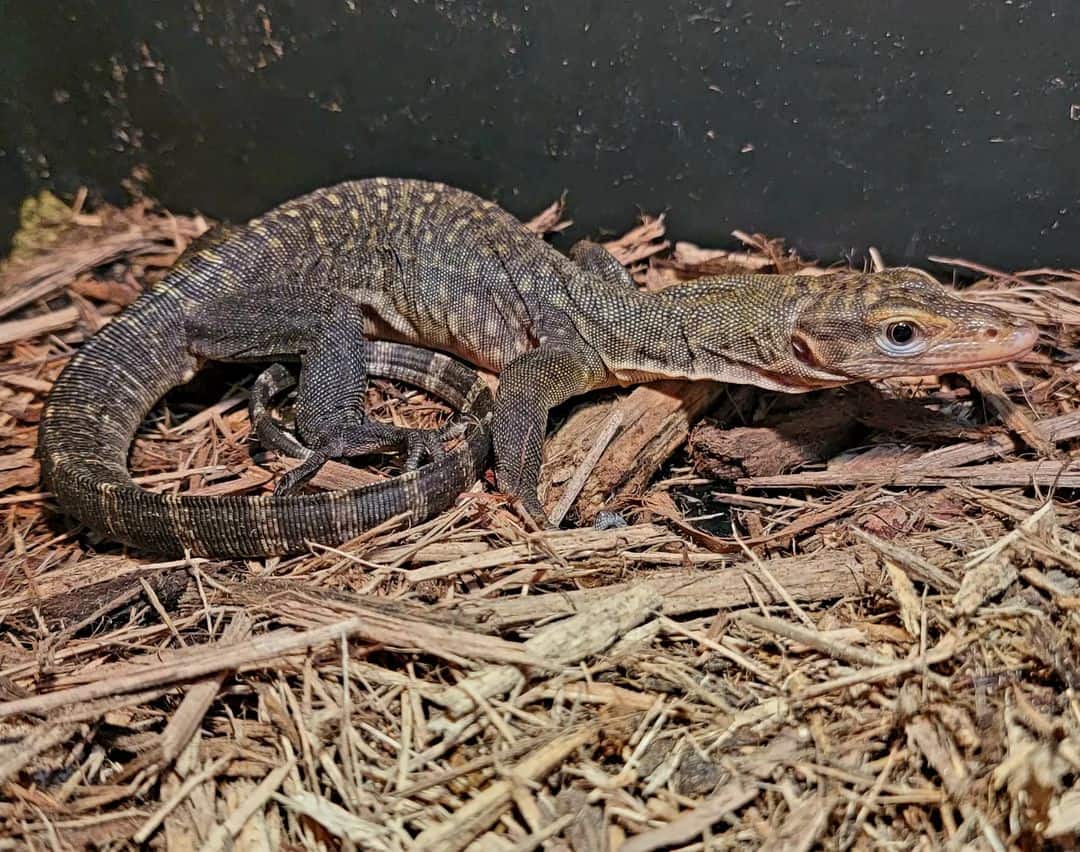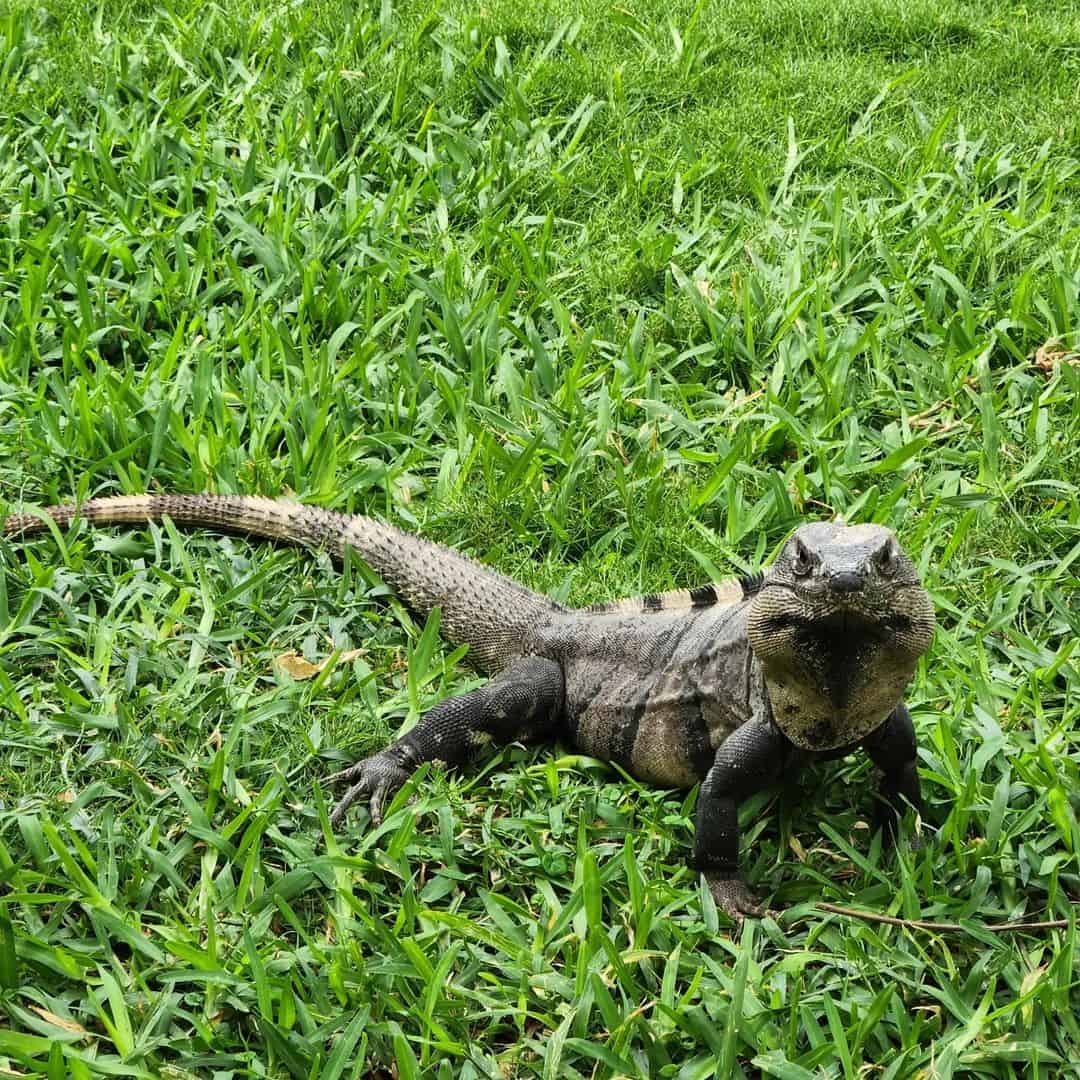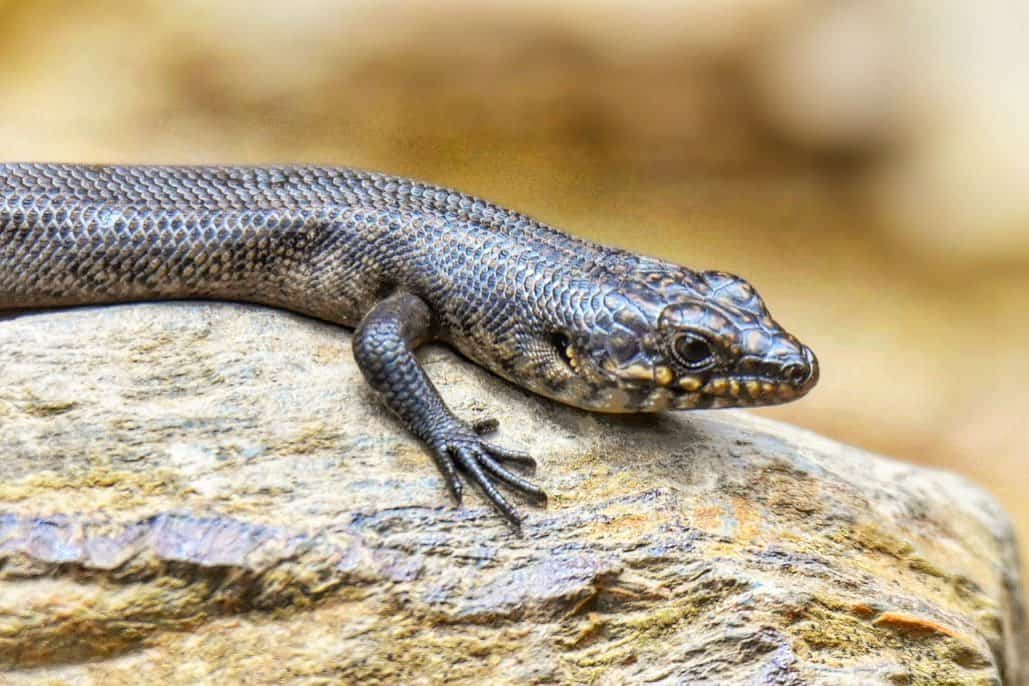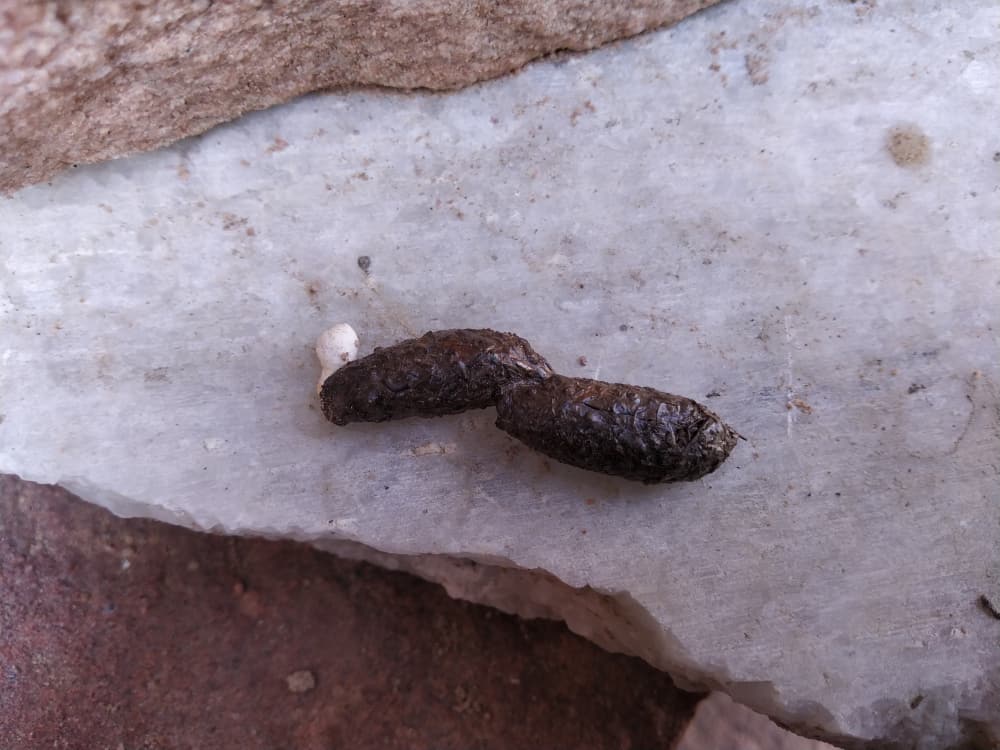You hear some skittering around your house, and you suspect that they’re lizards. Indoor lizards can get quite comfortable inside your home, especially when it’s where they feed and defecate. A tell-tale sign of having lizards is seeing their feces, so what does lizard poop look like?
Aside from the fact that they’re dirty, lizard poop can carry dangerous diseases. Being able to tell if it is lizard poop can help you avoid it and dispose of it properly.
What Does Lizard Poop Look Like
Thankfully, lizard poop has quite a unique look. They have an elongated brown pellet-shaped portion, then terminate in a white blob at the end. Technically speaking, only the brown part is the poop, while the white part is their urine.
These distinct feces is due to the anatomy of lizards only having one hole for excretion. The cloaca is a hole that serves as the excretory opening for both urine and poop. This contrasts with most mammals and even humans, which release urine and poop in separate holes.
Because they only have one cloaca, lizards release their fecal matter in a dark pellet shape, then excrete their urine afterward.
The White Part
Because lizards retain more moisture from their urine than us, the resulting waste matter becomes white crystallized uric acid.
Called the urea cap or urea smear, this white part crystallizes because lizards developed to absorb the minimal water from their food, and their methods of getting water are not as good as other animals. They eke out even the water from their urine to preserve water, leaving only the solid parts that become crystals.
This urea cap is the most distinctive characteristic of lizard droppings, but they are not common to all lizard species. However, if you do see this white ball on the tip of a dropping, you can be sure that it came from a lizard.
House lizard droppings are also often small, and although they are usually solid, they can also be quite liquid, depending on the diet of the lizard. Thankfully at least, lizard poop does not smell as bad as excretions from other animals.
Variations of Lizard Poop
If you have household lizards, such as those that stick on your ceilings and walls, then you’ll find the described fecal matter above somewhere. Blue-tongued skinks are another lizard species that has a similar poo profile.
However, other species of lizards don’t always have that unique white cap.
Other lizards, such as the green iguana and gecko, have dark fecal matter shaped like a pellet, but it has urate instead of a white ball. Urate consists of a thick, clear liquid and a white stringy mass that either comes separately, wraps around the pellet, or becomes part of the fecal pellet.
Where Can You Find Lizard Poop

Lizards are known to choose their defecating area using two criteria. First, they will often poop in an area where they have a good view of the surroundings, and consequently, of predators.
Secondly, lizards often use fecal matter as some sort of “keep out” sign to other lizards, much like the urine marking behavior of male dogs. Male lizards are likely to avoid areas where another male has left their waste material.
Additionally, lizards have also been known to recognize other lizards’ poop and even know some information about the lizard. Studies have suggested that they even communicate using their feces.
For house lizards, you are more likely to see them inside your house rather than outside. This can be due to less of the two reasons above and more to the inside being their main habitat, which might serve as their own toilet, too.
Comparing Lizard Poop to Other Animals
Because of their distinct white ball, lizard poop can be quite unique. However, how does it compare to other fecal matter from other animals?
1. Compared With Snakes
Snake feces are actually very similar to lizard poop. They have the same dark pellet-shaped fecal matter and a white urea cap at the end. However, snake feces are more likely to contain a lot of indigestible material, like bones and fur, due to their eating behavior of swallowing their prey whole.
Additionally, snake feces tend to be more watery and loose than lizard poop because their diet does not include a lot of fiber sources. Plus, you can find snake poop more often outdoors rather than lizard indoor poop. Snake poop size can vary proportionate to the size of the snake, too.
2. Compared With Rats
If lizard poop didn’t have its iconic white tip, then you might have a hard time distinguishing them from rat poop. Both animals defecate dark fecal matter in a pellet shape. However, if you don’t see the urea smear, then the size will give it away: rat droppings are generally larger than lizard poop.
If you are comfortable with it, you can find that rat poop is also more pungent than lizard poop.
Mouse poop might be the closest to lizard poop in terms of size. Without the white cap, mouse poop is just a tad bit smaller than lizard poop. Mouse poop is around 3/16 inches long, while lizard poop is around a one-eighth inch on average.
3. Compared With Birds
Birds actually have the same cloacal excretory system as lizards. However, where the lizard’s urates crystallize, bird poop simply mixes together with their liquid urates, which ends up becoming white goop.
Is Lizard Poop Dangerous?

Aside from the fact that it’s dirty, lizard poop, as with any fecal matter, is home to many harmful bacteria that can cause diseases. The most common one is Salmonella bacteria, which naturally lives in the digestive guts of many reptiles and amphibians, including lizards.
Other possible diseases that you can contract from lizard poop are botulism, campylobacteriosis, and leptospirosis. These are gravely dangerous diseases that can threaten your life and your family’s life.
Avoid getting into contact with lizard poop, and if you do end up touching it, immediately wash your hands and avoid touching other parts of your body.
Prevent Lizards from Coming Into Your House
After knowing the threat that lizard poop poses to you and your family, you might want to avoid sharing the same space as these pests. Here are some tips that you can follow to keep them away as much as possible:
- Keep your house as clean as possible. Any dirty area is a potential habitat for wall lizards and other pests.
- Pay special attention to the areas under your sink. These damp and dark locations are perfect breeding spots for lizards.
- Keep fruits in a sealed container. They’re a lizard favorite, so keeping those off their hands would discourage them away.
- Place mothballs in cabinets and closets. They are quite effective in getting rid of not just lizards but also cockroaches and other pests.
Pet Lizards with Problematic Poop

If you’re keeping a pet lizard around, you might want to check up on your pet’s poop. Their poop color can signify certain conditions that they might have:
- Green – if everything else is normal, this is usually not a concern. However, if the poop is runny and watery, this might indicate a bacterial infection such as Salmonella
- Red – this might be blood smears coming from lizards that can’t poop properly
- Black – although old poop can usually turn black, if the poop is watery, it might indicate a parasitic infection
Runny poop is usually not a point of concern, as this may be due to a change in your pet’s diet. However, if this goes on for longer, it might be a sign of other digestive issues with your lizard.
Additionally, seeing pus or smelling a foul scent from your pet lizard’s poop can also indicate a problem, since lizard poop usually doesn’t exhibit those traits.
If you encounter any of these problems, it’s best to bring your beloved pet to a veterinary clinic to get them checked up.
How to Remove Lizard Poop
Since lizard poop is often solid, cleaning it up can be as simple as picking it up with several pieces of tissue and then throwing it into the trash. Remember to wash off the area with soap and water to remove all traces of bacteria from the feces.
If the poop happens to stain a piece of fabric, try to wash it off with a simple solution of white vinegar and water. Wash it with detergent and water afterward, then the stain should come off. If it does remain stubborn, then a stain remover should do the trick well.
Conclusion
If you are seeing some unsightly excretions somewhere in your house, you might want to check if it’s lizard poop. Aside from being dirty, lizard poop can pose serious threats to your health.
If you can see and confirm that you have come across lizard poop, you might need to do some preventative measures to get rid of those pests. Although they are generally harmless, they carry with them risks that you don’t want to take.
If you have a pet lizard and you can see something wrong with their feces, we highly recommend that you see a vet right away so that they can diagnose the problem properly.
